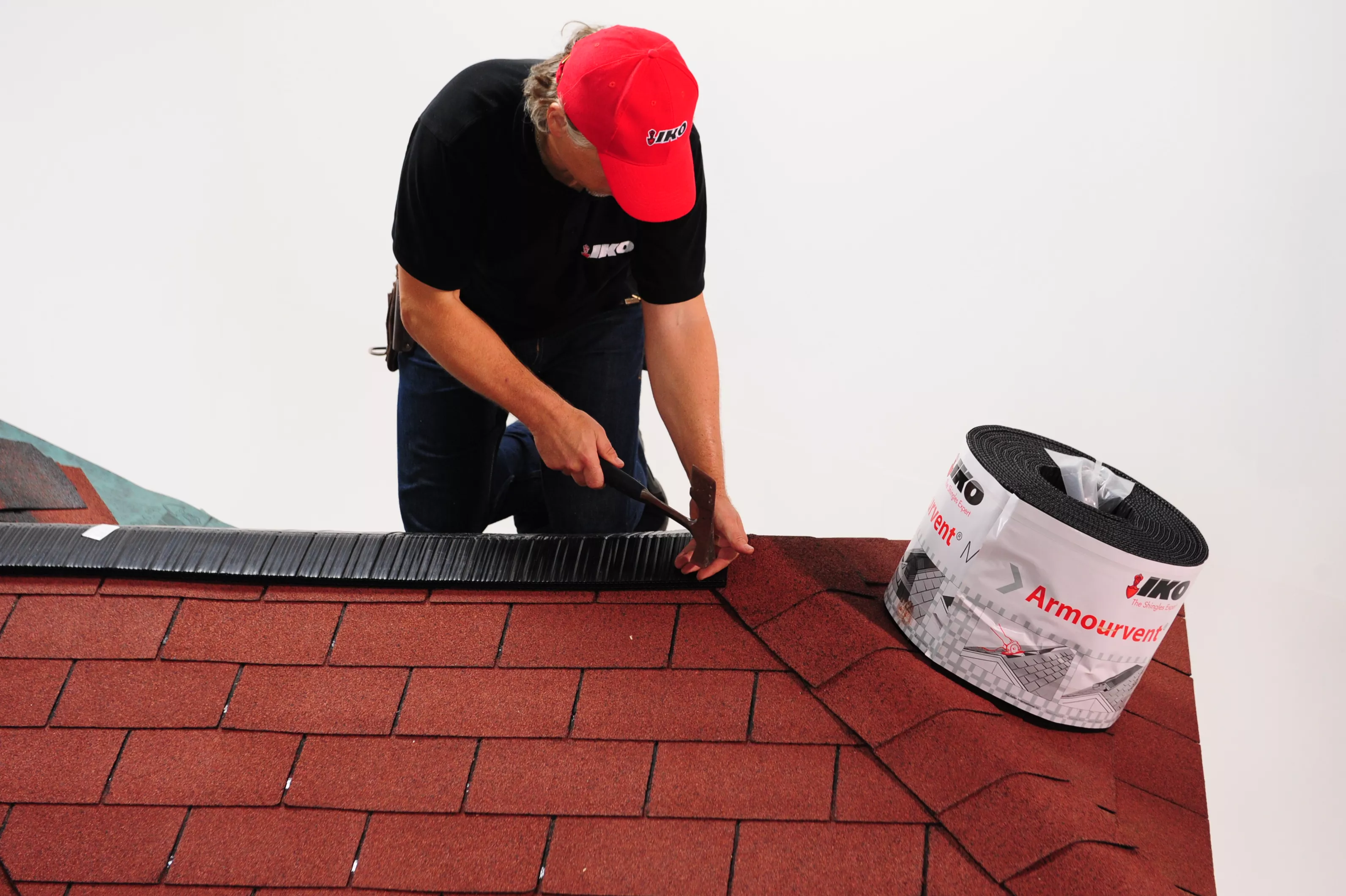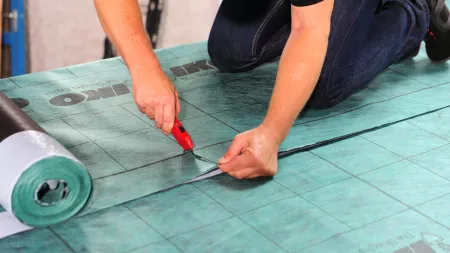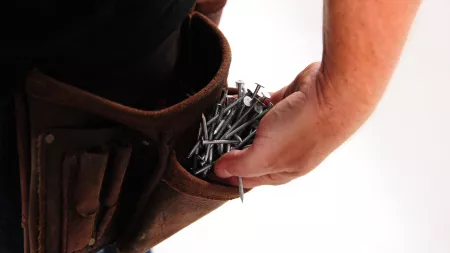
Removing algae and moss from your roof
Removing algae and moss from your roof
When living in a humid area, it’s possible your roof is covered with lichens, algae and moss. They can grow on every type of roofing material: bitumen shingles, concrete and/or ceramic tiles, slates or even painted metal sheets.
Moss on bitumen roof shingles, concrete tiles, ceramic tiles and painted metal sheets. >>>

Unfortunately the stains these organisms leave on bitumen roof shingles make your house look terrible and sometimes desolate, which reduces the value of your house. In some cases, these stains are a rather cosmetic issue. But in some cases these stains are symptoms of something much worse. It can lead to serious damage or even roof failure. Sometimes it can be easy to find the causes of the stains, and even to get rid of them and prevent them from recurring.
Common causes of staining
Dark stains on a bitumen shingles roof could be caused by different causes:
1. Algae growth
Blue, green or black stains on a bitumen shingle roof are mostly caused by algae. These algae staining begins with small spots. Over time these spots can develop into streaks. Algae stains are often mistaken for mold or mildew. Algae may hurt the appearance of your shingles roof, but other than that it is not harmful at all.
Algae stains on bitumen roof shingles:

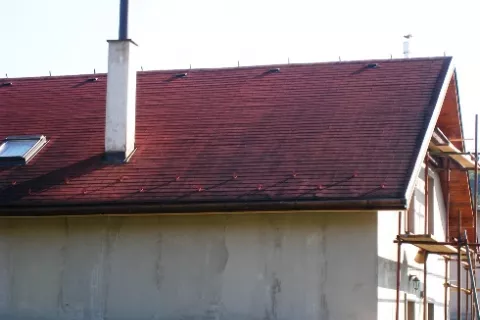
2. Moss
Velvety green masses of moss often grow on the north-facing side of roof surfaces and on tree-shaded roofs. Unlike the above mentioned algae, leaving moss on your roof surfaces can develop bigger problems. By infiltrating the roof structure underneath the shingles, moss can make the shingle edges lift and curl. This can lead to cracking and blow-off during high winds and storms. Another effect of heavy moss growth is the forming of dams which can cause water to back up underneath the roof shingles and damage the roof deck. Best thing to do is clean off moss as soon as you notice it on your roof!
Moss on shingles roof >>>
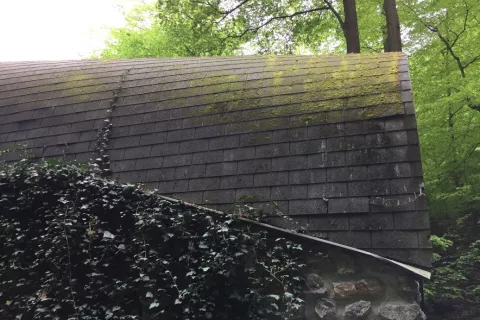
DIY Algae and moss removal recipes
Luckily both algae and moss can be easily removed from shingle roofs. DIY stores sell many popular liquid solutions that are specifically made to kill the moss. Or you can make your own moss remover in a large spray bottle with one of these four DIY recipes:
- • 240 ml dish washing soap + 7,5 liter of water
- • 450 grams powdered oxygen bleach + 7,5 liter of water
- • 500 ml chlorine bleach + 7,5 liter of water
- • 500 ml white distilled vinegar + 7,5 liter of water
When using one of these homemade options, you should wet down the roof with plain water first, then apply the cleanser and let it rest for 20 to 45 minutes. Lightly scrub your roof with a soft-bristle brush, and then rinse with water.
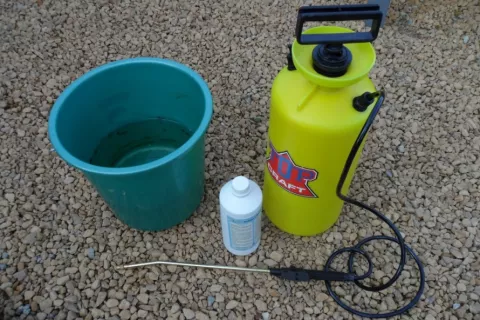
Safety first
Bleach and some cleaners can be harmful to humans and the environment; so it's a good idea to take some precautions when working with them, including the following:
- Choose a calm, windless day to clean your roof.
- Make sure your plants are protected. Spray those near to the house with water and cover them with tarps so that they are protected from chemical overspray and runoff.
- Think about your own safety as well: wear protective clothing, including long sleeves, pants and gloves. Use goggles to protect your eyes and wear shoes with high-traction soles.
Because working on a wet roof is dangerous, you need to take adequate safety precautions. Avoid working on steep roofs, wear non slip shoes and use a safety rope and harness where needed. Alert someone that you will be working on your roof. In case of an accident that incapacitates you, you’ll want someone to know where to look for you. Even better is to call a professional to do this job for you.

How to clean algae and moss from a roof
It’s best to clean your roof on a cloudy day to prevent the removal liquid from evaporating too quickly. Apply this liquid solution with a garden sprayer. When using an Anti-Moss solution let it stand on the surface for about a few hours without rain. Your roof will get clean in the next few weeks.
Don’t let a bleach mixture stand on the roof surface longer than 20-30 minutes. Rinse it off with the spray from a garden hose after 30 minutes. Remember; don't use a pressure washer, which can damage the shingles by removing their protective layer of asphalt granules.
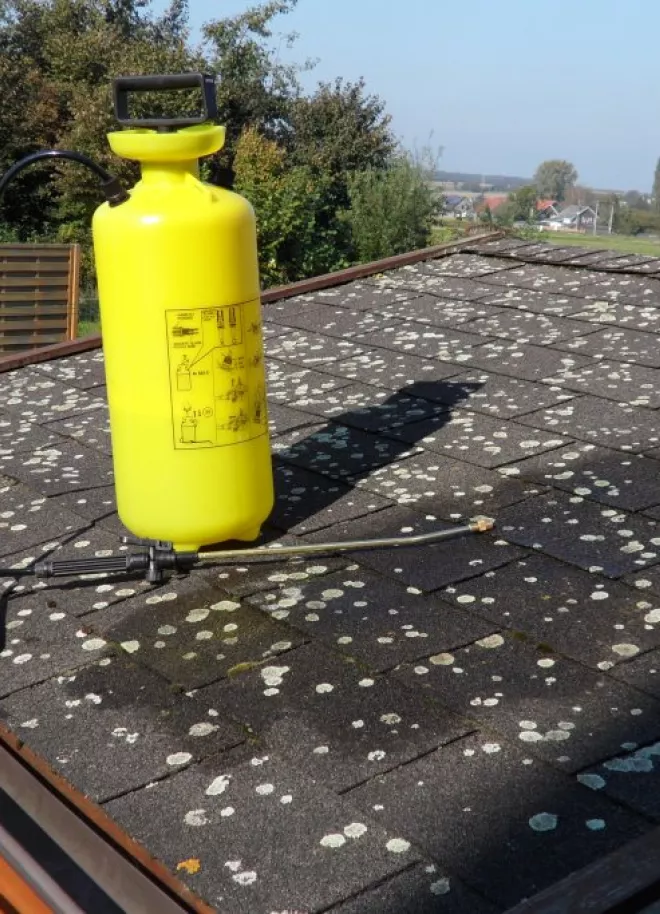



If accumulations of algae or moss are heavy, a part of it should wash off the roof surface immediately with the stream from the garden hose. Using a brush or broom with medium-stiff bristles you can attempt brushing off algae and moss, but don't scrub too hard. You don't want to brush off the mineral granules from the shingles.
If algae, moss or heavy stains persist on your roof surface after rinsing, let the roof dry, and then spray on the bleach solution again. Again wait for 30 minutes and rinse with a hose. Don't worry if some staining remains after this second rinse. Exposure to rain and sunlight should wash it off over time.
How to prevent algae and moss stains from recurring
Most commonly algae and moss grow on roof surfaces that are shaded and remain humid. Cutting off tree branches that overhang the roof and block sunlight will surely help keeping your roof algae and moss free. Keep the roof surface clean by blowing off leaves and fallen branches during seasonal maintenance.
Long-term stain prevention can be assured by installing zinc or copper strips under the cap shingles, leaving about 6 cm of the surface exposed at roof peaks, along hips, and under the first course of shingles at the base of dormers. Copper and zinc are sacrificial metals that shed tiny fragments of their surface with each rainfall. The metals coat the roof and ban organic growth for many years.
>>> Picture 1 (left): The moss doesn’t grow close to copper metal flashing
>>> Picture 2 (top right): The red lines indicate where to install zinc or copper strips to prevent algae and moss growth.
>>> Picture 3 (top bottom): Ridge with Armourvent Multi and zinc moss repellent tape
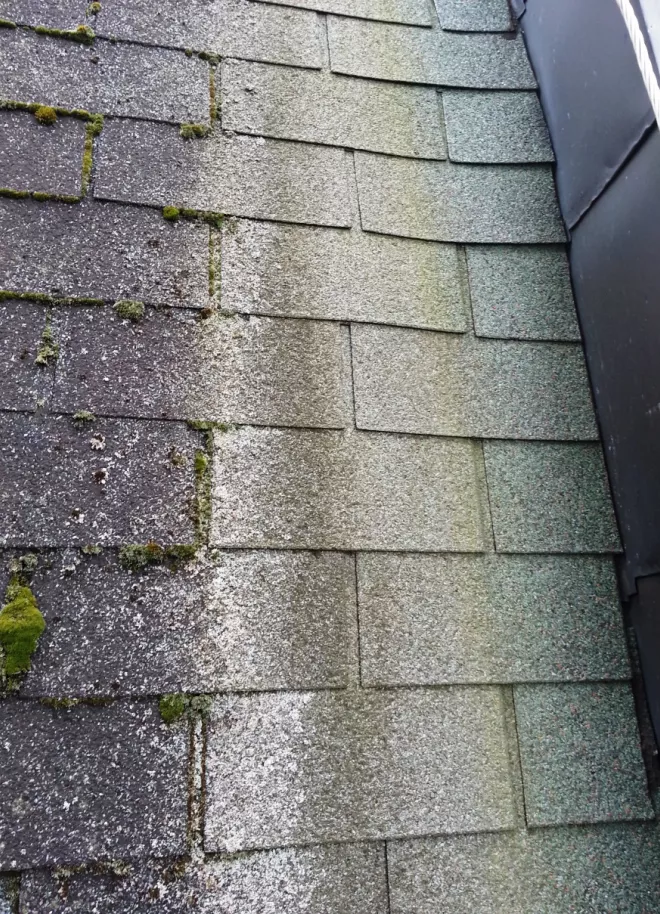
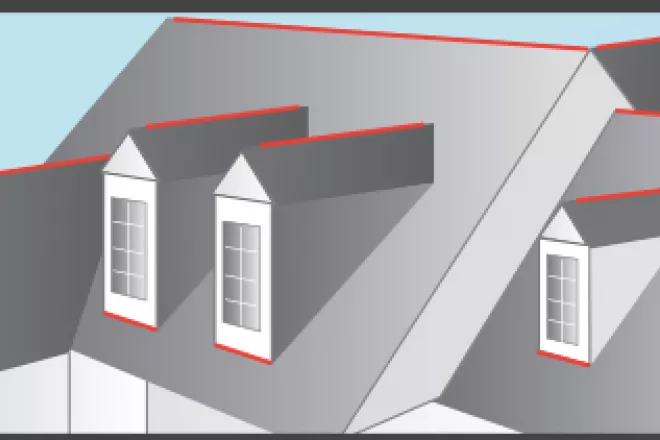

Following these maintenance tips can help you enjoy your attractive roof. They can also help extend your roof’s service life, which is important whether you plan to stay in your home or sell it in the future.
More tips on the protection of your roof can be found in our blogs.
Good luck!

